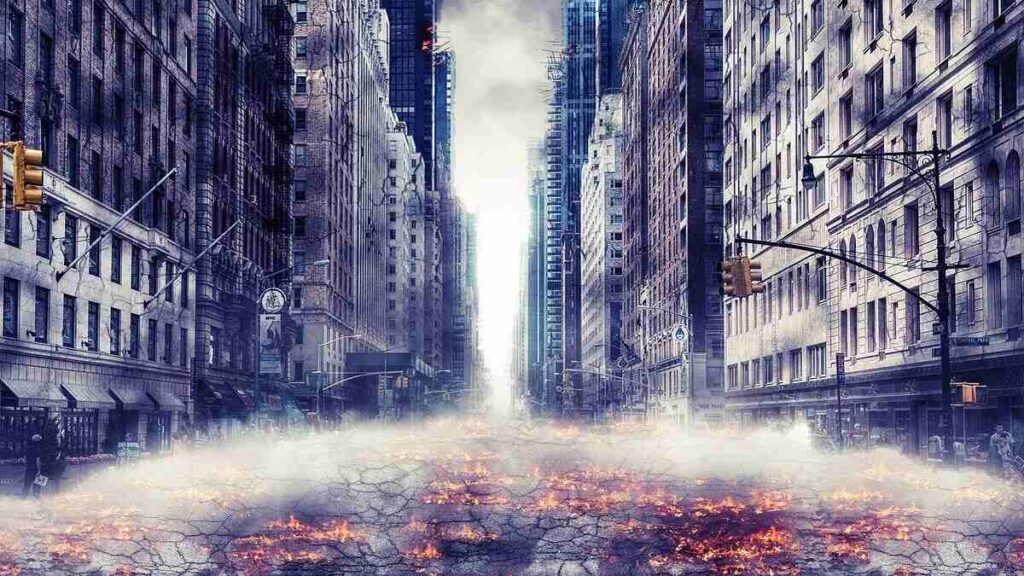Introduction
The Los Angeles Wildfires are an annual reminder of nature’s devastating power, wreaking havoc on communities and economies alike. These fires go beyond environmental destruction—they are a financial catastrophe for businesses of all sizes. From the famed Hollywood Hills to small family-owned enterprises, every corner of the region feels the strain. Businesses face immediate challenges, such as structural damage and halted operations, compounded by long-term impacts like declining property values and skyrocketing insurance premiums.
- Introduction
- What Causes Los Angeles Wildfires?
- Human Cost: Los Angeles Fire Death Toll and Its Economic Impact
- Immediate Economic Impacts of Los Angeles Wildfires
- Effect on Small Businesses
- Long-Term Economic Fallout
- Environmental Costs and Their Business Implications
- Strategies for Business Resilience
- Role of the Community in Recovery
- Conclusion
Each wildfire season presents new obstacles, forcing business owners to confront an uncertain future. Understanding these fires’ root causes and economic consequences is essential to crafting effective solutions and building resilience against this recurring crisis.
What Causes Los Angeles Wildfires?
The recipe for wildfires in Los Angeles is a volatile mix of natural elements and human activity. The region’s Mediterranean climate, marked by long, dry summers, creates the perfect conditions for fires to ignite and spread. Add the notorious Santa Ana winds, which can whip flames into uncontrollable infernos, and you have a disaster waiting to happen.
Human activity plays a significant role, too. A discarded cigarette, poorly maintained power lines, or even acts of arson can trigger fires that devastate communities. Climate change has exacerbated these conditions, making wildfires more frequent and intense. Over the past decade, the frequency of Los Angeles Wildfires has surged, turning a seasonal event into a near-year-round crisis.
Human Cost: Los Angeles Fire Death Toll and Its Economic Impact
The Los Angeles wildfire fire death toll represents the most tragic aspect of these wildfires. While businesses suffer financially, the loss of life brings profound emotional and economic consequences. The 2020 Bobcat Fire, for instance, resulted in fatalities that left families and communities grappling with grief and economic uncertainty.
Impact on Workforce and Productivity
Fires often displace workers, causing labor shortages in critical industries. Families losing their primary earners experience financial instability, further affecting local economies.
Healthcare Costs
Smoke inhalation and other health issues caused by wildfires lead to soaring medical expenses. Businesses must grapple with absenteeism and rising health insurance costs for their employees.
Immediate Economic Impacts of Los Angeles Wildfires
Direct Damages to Property and Infrastructure
The most evident impact of wildfires is the wreckage they leave behind. Businesses, homes, and infrastructure often lie in ashes, with repairs running into billions. For example, the Woolsey Fire of 2018 caused damages estimated at over $6 billion, a significant chunk of which affected local businesses.
Business Disruptions and Closures
For many, the days following a wildfire are filled with uncertainty. Stores shut down, supply chains collapse, and employees are displaced. Small businesses often lack the financial cushion to weather such disruptions and are the hardest hit. Restaurants lose perishable stock, while retail stores face months of closure due to structural damages.
Supply Chain Interruptions
Beyond local closures, wildfires disrupt supply chains worldwide. Roads, railways, and ports often close during the fires, halting the flow of goods. For businesses dependent on timely deliveries, such delays can translate into lost contracts and dissatisfied customers.
Effect on Small Businesses
Struggles with Rebuilding
Small businesses are the backbone of Los Angeles’ economy and the most vulnerable. With limited savings and resources, many struggle to reopen after a wildfire. Insurance claims can take months, leaving owners in financial limbo.
Loss of Revenue
Revenue losses during the Los Angeles Wildfires are staggering. Take, for instance, a popular cafe in Malibu that had to shut its doors for months during the Woolsey Fire. Not only did it lose regular customers, but the drop in tourist numbers further compounded its woes. For many such establishments, reopening isn’t just a challenge—it’s a gamble.
Long-Term Economic Fallout
Decline in Property Values
Wildfire-prone areas often see a significant drop in property values. For business owners, this means the worth of their assets plummets, making it harder to secure loans or sell properties.
Insurance Costs and Challenges
Insurance is a double-edged sword for businesses in Los Angeles wildfires. While it’s a lifesaver during disasters, the rising frequency of wildfires has led to skyrocketing premiums. Many companies find it increasingly challenging to afford comprehensive coverage, exposing them to future risks.
Environmental Costs and Their Business Implications
Impact of Smoke and Ash on Air Quality
Wildfires don’t just burn; they pollute. The smoke and ash from Los Angeles Wildfires significantly degrade air quality, affecting employees and customers. Businesses in hospitality and outdoor services face immediate losses as poor air quality drives people indoors.
Agriculture and Food Supply Chain Disruptions
Agriculture, a key sector in California, suffers immensely during wildfires. Vineyards lose valuable crops, while disruptions in supply chains create shortages that ripple through the economy. The result? Higher costs for businesses and consumers alike.
Strategies for Business Resilience
Importance of Disaster Preparedness
Preparation is half the battle. Businesses can start by conducting risk assessments, creating evacuation plans, and training employees on disaster response. Investing in fireproof materials and backup power sources can also minimize damage.
Leveraging Insurance Effectively
Understanding insurance policies is crucial. Many businesses fail to read the fine print, leading to denied claims. Consulting with experts and ensuring adequate coverage can make the recovery process smoother.
Government Support and Resources
The government offers several grants and loans to help businesses recover from wildfires. Programs like FEMA’s disaster assistance provide a much-needed financial lifeline. Local initiatives aimed at fire prevention also play a critical role in mitigating future risks.
Role of the Community in Recovery
Community support can make all the difference in the aftermath of a wildfire. From crowdfunding campaigns to volunteer-driven clean-ups, the collective effort of local communities often helps businesses get back on their feet. One inspiring example is the recovery of small shops in Ventura County, where neighbors came together to rebuild what the flames destroyed.
Conclusion
The economic fallout of the Los Angeles Wildfires is a multifaceted challenge that includes immediate destruction and enduring financial strain. Businesses face massive losses from property damage, operational shutdowns, and disrupted supply chains. Rising insurance premiums and reduced property values add to the financial burden, making recovery an uphill battle. Small businesses, in particular, struggle with limited resources and delayed insurance payouts.
However, there’s hope through proactive measures like disaster preparedness, fire-resistant infrastructure, and leveraging community and government support. Programs such as FEMA assistance and local grants provide critical relief. A combination of preparation, innovation, and resilience can help businesses rebuild, adapt to a changing climate, and foster economic stability in wildfire-prone regions.


